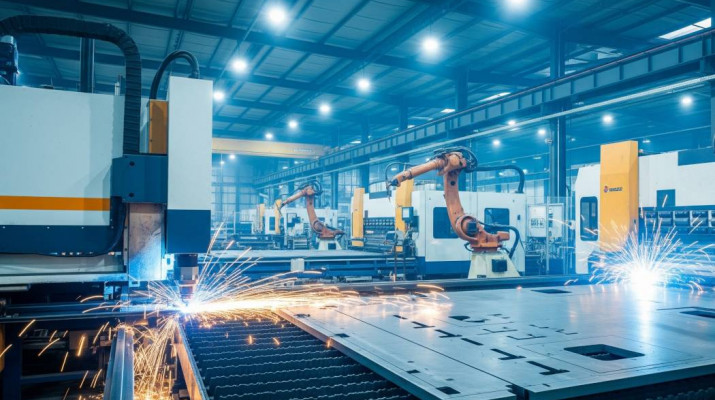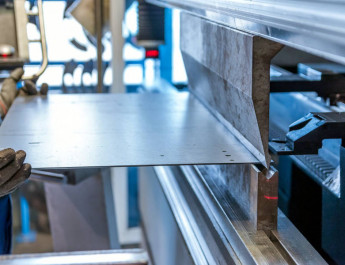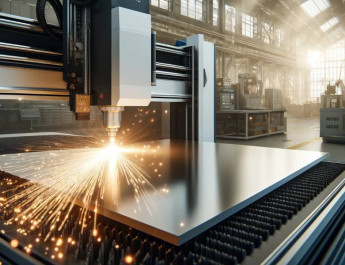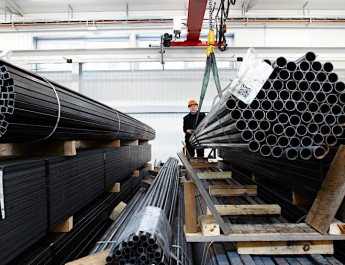Metalworking is the foundation of modern industry. Without it, there would be no bridges, cars, advanced machinery or precise medical devices. While many people associate it mainly with noisy workshops and flying sparks, the world of metalworking actually hides countless fascinating technologies and curiosities that often go unmentioned. Particularly intriguing are laser cutting, robotic welding and CNC bending.
Laser – light that cuts through steel
How is it possible for light to cut steel?
Laser cutting is a technology that still sounds like science fiction to many. After all, how can a thin beam of light cut through thick steel sheets? The secret lies in the enormous concentration of energy. High-end industrial lasers focus light with power reaching several kilowatts on an area just fractions of a millimeter in diameter. As a result, the temperature at the point of contact exceeds 10,000 °C, causing the material to melt or vaporize almost instantly.
Speed that surprises
Modern laser cutting machines can achieve cutting speeds of several millimeter-thick sheets exceeding 100 meters per minute. This means that a pattern which would take hours to produce by hand can be made by the machine in just a few seconds.
Air and nitrogen instead of oxygen
Although oxygen is often used for cutting carbon steel (because it additionally oxidizes the steel, aiding the cut), in the case of stainless steel or aluminum, nitrogen or compressed air is increasingly employed. This results in cleaner cut edges and eliminates the need for extra grinding, saving both time and money.
Micro-details in microns
The most advanced fiber lasers used in the electronics industry can cut patterns with an accuracy below 10 microns. That’s a thousand times thinner than a millimeter – roughly 1/10 the thickness of a human hair!
Robotic welding – where humans cannot reach
Robots that “feel” the weld
In many car factories and steel structure plants, welds are made by welding robots. But these aren’t just ordinary “arms with a torch.” Today’s robots can continuously monitor the shape and temperature of the weld. Thanks to laser sensors and vision systems, they “see” whether the weld pool is flowing properly and automatically adjust their path if needed.
Welding at night and without breaks
Welding robots can work 24 hours a day, without fatigue or breaks. All it takes is proper maintenance and regular replacement of torches or nozzles. That’s why many production halls are almost empty at night – when the lights are turned on, all you see are rows of working machines.
Hybrid welding and remote control
An interesting technique is hybrid welding, which combines a traditional electric arc with a laser. This allows for deeper welds and faster work. Moreover, operators often control robots… from the office. Using special interfaces, they can adjust parameters in real time while watching camera feeds.
CNC bending – precision with hundreds of tons
Why can a press brake fold steel like a sheet of paper?
Modern CNC press brakes can generate forces of several hundred tons. Under such pressure, steel several millimeters thick behaves almost like paper, folding exactly into the desired shape. The computers controlling the press precisely calculate how deep the die must press to achieve the required angle, taking into account the material’s spring-back.
3D bending and in-process measurement
Some advanced CNC benders are equipped with laser scanners or touch sensors that measure the bending angle in real time. This allows the machine to immediately adjust the pressing force to achieve a perfect result, even if the material in a particular batch has slightly different hardness.
Rapid sheet metal prototyping
CNC bending is also crucial in so-called rapid prototyping. When a company designs a new product, it often needs several prototypes in different variants. Instead of ordering expensive molds, it’s enough to program the CNC press, and in a few hours ready components for testing are produced.
Metal in a modern edition
Metalworking in zero gravity
A curiosity at the border of science and science fiction are NASA and ESA experiments on metalworking in outer space. In microgravity, the processed material behaves completely differently – chips don’t fall, but float in the air, which requires special extraction systems and cameras that record every tool movement. The future of space infrastructure construction may depend precisely on the ability to bend and weld structures in a vacuum.
Titanium and aluminum – metals of the future
In modern machining, processing lightweight yet strong alloys such as titanium or aerospace-grade aluminum is becoming increasingly important. Cutting and bending such materials requires not only powerful machines, but also special lubricants and parameters, because titanium heats up very quickly and can damage the tool.
Summary – technology that continues to amaze
Although for many people metalworking is only sparks and the noise of presses or grinders, in reality it is a world of extremely advanced technologies, where lasers cut steel with microscopic precision, welding robots build bridges without human involvement, and press brakes bend with accuracy down to tenths of a millimeter. It’s a fascinating field where tradition meets ultra-modernity – and where new, surprising solutions continue to emerge.




